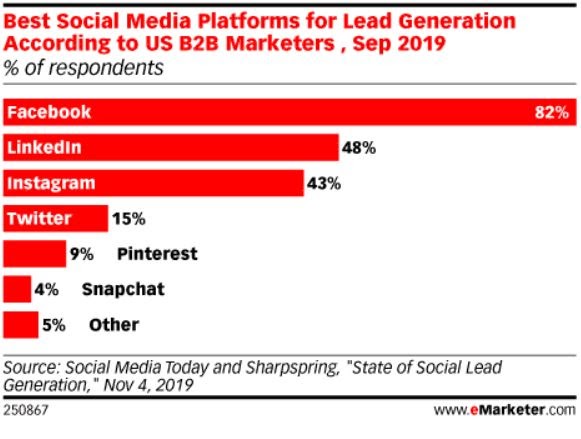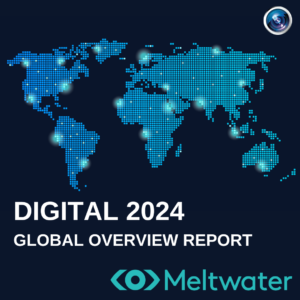You may have heard this term used by companies and marketers around the world. Lead generation can cover a wide range of tactics used to engage with consumers who could be a buyer at some point. Every business has a sales cycle, beginning with brand awareness.
Finding potential customers and successfully reaching them can be a long and difficult process, no wonder so many companies get it wrong. The process combines the various marketing actions that businesses can take to reach potential customers.

Why is it important?
Revenue. Customers. Sales. Running a business in a digital world.
Regardless if your business is B2C or B2B, lead generation is key to ensuring that your product or service marketing efforts are being focused to the right audiences. Rather than spending your budget and time on broad-based brand awareness, you could be utilizing that money to reach actual buyers and potential customers that are already actively searching for your products or services.
How to start
Traditionally, consumers can be considered a lead after they have expressed some form of interest in your brand, products, or services similar to your offerings. As part of the ‘buyers journey’, leads can be accumulated in segmented lists as a result of marketing efforts.
To get the ball rolling, we would recommend restructuring your website landing page to include well-written sales copy with a call to action(CTA) for individuals to sign up to receive notifications, emails, or direct mail. Through this process, you will begin to accumulate warm leads that have agreed to have a relationship with your business. As long there is some value there for the visitor and you are actively engaged with your target audience, it is likely they will sign up. Win-win right?
Another early-stage tactic that is widely used is through ads on social media. Before we get into the world of paid advertising on social media, let me first offer some facts:
- Social media marketing has reduced costs for 45% of businesses.
- Almost 68% of businesses are using social media to generate leads in 2018
- Businesses grew by 24% by using social media for lead generation.
- Biggest social media barrier for 77% businesses is a limitation in lead improvement
- An average lead costs $2.50 on Google and $0.80 on Facebook. That’s a 32% cost efficiency through social media advertisements.
Source: Hootsuite

Pay per click Ads
Pay-per-click (PPC) advertising are a great way to bring well-qualified visitors to your website, supplement your organic search engine optimization (SEO), increase conversions and build trust with potential customers. With PPC, you can show up on results pages when someone is using Google to find your products or services, and you can gain awareness and brand recognition on social media platforms while utilizing remarketing and retargeting ads to clients who didn’t convert on your site.
Our PPC services feature keyword research (including negative keywords), A/B testing, campaign refinement, conversion tracking, and daily maintenance. Popular platforms that are commonly used:
- Google Ads (formerly Google Adwords)
- Google Non-Profit Ad Grants
- Google display ads
- Facebook ads
- LinkedIn ads
- Twitter ads
- Instagram ads
- YouTube ads

Social Marketing
Social media platforms are incredibly intuitive tools that offer direct access to customers. Having an effective strategy in place from a business perspective, you can actively engage with new customers, build brand awareness, and inform a broader audience on what you do.
Utilizing the experience of a social media specialist can maximize efforts for the goal of generating new leads, new customers and retention of existing customers. Identifying who your target audience allows you and your preferred marketing person to develop a strategy to ensure that those customers see your efforts.
Email Marketing
There are two primary methods of using email marketing to generate leads.
The first can be misconstrued as many are not aware of Canada’s Anti-Spam Legislation (CASL) regulations on “opt-in” and “opt-out”. Without an understanding of this, sending out marketing emails such as newsletters will go straight to every spam folder on your email list. There is a line to walk with email marketing.
To summarize, it is against the legislation used by email providers such as Gmail and Outlook to send marketing emails to those who have not accepted an agreement to receive communication from your company.
Think about when you go to your favorite online clothing retailer, yes you may receive a 10% discount code, but you surrender your information and agree to receive communication from them. A successful way to send marketing to their inbox to inform your audience that will result in new sales.
The second is to go old school. This takes more time to be actively searching for the specific persons that you want to create a relationship with for the purpose of future sales. Take B2B sales, for example, your sales depend on identifying key personnel that will be open to hearing about what you do. This involves going to their social profiles, company websites, team bio page, press releases, etc.
Different from the CASL regulations, a single email that does not include materials for product or service promotions are allowed and not flagged against the CASL. If you are a business owner, you have received these in the past. For those in the business of selling to other businesses, it can be a crucial strategy to ensure you can effectively showcase what your selling to the right people.

Create downloadable content
This can be applicable to a majority of businesses, however not all will carry a level of thought that is actively sought by people online. By creating downloadable content such as eBooks, infographics, media kits, company white papers to name a few, similar to a discount code for your information, you can capture leads that are already actively educated themselves on what you do.
Offering something for free will always have an incentive to an audience. The goal is to capture ‘warm’ leads. It can also put your team out there as thought leaders in your space. By offering free educational resources, from a potential customer’s point of view, can instill confidence in their purchasing on levels that go beyond your competitors.
A great example of this is Hubspot’s blog, where they have created multiple downloadable resources to help marketing teams be better educated on new strategies. They also have have several service offerings you can purchase such as CRM software, CMS hub and website development platform. To which they will inform you consistently on their services via email once you have opted to accept their communication.
While there is more to the spectrum of how to capture new leads, the strategies above in unison can revamp how you are reaching your target audience, how you are informing them on what you do, and instilling consumer confidence to retain customers as your business grows. Reaching out to the marketing team can take these types of actions and consistently grow your leads.




